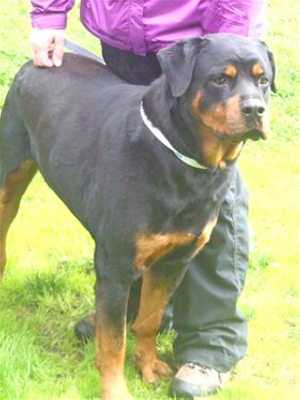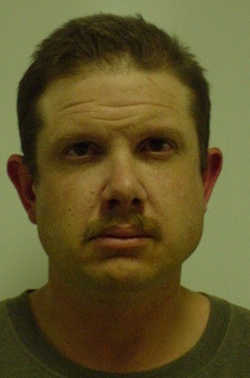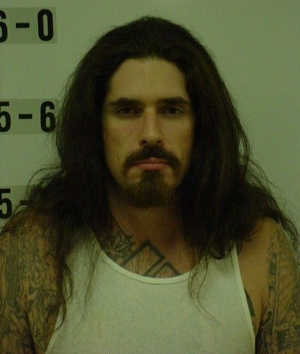- Elizabeth Larson
- Posted On
Helping Paws: A unique group of dogs
LAKE COUNTY, Calif. – This week Lake County Animal Care and Control has a number of unique dogs waiting for homes.
The breeds available include mixes of basset hound, Chihuahua, kelpie, retriever, schnauzer and wire-haired pointing griffon mix.
Dogs that are adopted from Lake County Animal Care and Control are either neutered or spayed, microchipped and, if old enough, given a rabies shot and county license before being released to their new owner. License fees do not apply to residents of the cities of Lakeport or Clearlake.
If you're looking for a new companion, visit the shelter. There are many great pets hoping you'll choose them.
In addition to the animals featured here, all adoptable animals in Lake County can be seen here: http://bit.ly/Z6xHMb .
The following dogs at the Lake County Animal Care and Control shelter have been cleared for adoption (additional dogs on the animal control Web site not listed are still “on hold”).

'Skippy'
“Skippy” is a 3-year-old male Chihuahua mix.
He weighs 10 pounds, has a short buff coat and has been neutered.
Find him in kennel No. 2, ID No. 39112.

Male Chihuahua mix
This male Chihuahua mix is 1 year old.
He has a short black and white coat, weighs nearly 11 pounds and has not yet been neutered.
Find him in kennel No. 3b, ID No. 3917.

'Dillon'
“Dillon” is a 3-year-old male basset hound-retriever mix.
He weighs 42 pounds, has a short tan and white coat, and has been neutered.
Find him in kennel No. 4, ID No. 27834.

Male Chihuahua mix
This male Chihuahua mix is of undetermined age.
He weighs 7.6 pounds, and has a short brown and white coat. It was not reported if he has been neutered.
He's in kennel No. 5, ID No. 39172.

Miniature schnauzer mix
This male miniature schnauzer mix is 7 years old.
He has a curly black and white coat, a docked tail, weighs 19 pounds and has been neutered.
Find him in kennel No. 7, ID No. 39173.

Male Chihuahua mix
This male Chihuahua mix is 2 years old.
He has a short tricolor coat, and shelter staff did not report if he has been neutered.
He's in kennel No. 8a, ID No. 39156.

Male Chihuahua mix
This male Chihuahua mix is 2 years old.
He has a short tan coat and weighs 7 pounds. Shelter staff did not report if he has been neutered.
He's in kennel No. 8b, ID No. 39154.

Male pit bull terrier mix
This male pit bull terrier mix is of determined age.
He's got a curly brown brindle and white coat, and weighs 26 pounds. Shelter staff did not report if he has been neutered.
Find him in kennel No. 19, ID No. 39060.

Labrador Retriever mix
This male Labrador Retriever mix is 10 months old.
He weighs nearly 54 pounds, has a short black coat and has been neutered.
Find him in kennel No. 24, ID No. 39162.

Australian Kelpie mix
This female Australian Kelpie mix is 9 months old.
She weighs 20 pounds and has a short brown brindle coat. Shelter staff did not report if she has been spayed.
She's in kennel No. 26, ID No. 39033.

Wire-haired pointing griffon mix
This female wire-haired pointing griffon mix is 4 years old.
She has a medium-length black coat and weighs 55 pounds. Shelter staff did not report if she has been altered.
Find her in kennel No. 32, ID No. 39185.

'Duke'
“Duke” is a 4-year-old male Rottweiler mix.
He weighs 122 pounds, has a docked tail and has been neutered.
He's in kennel No. 33, ID No. 39158.
To fill out an adoption application online visit http://www.co.lake.ca.us/Government/Directory/Animal_Care_And_Control/Adopt/Dog___Cat_Adoption_Application.htm .
Lake County Animal Care and Control is located at 4949 Helbush in Lakeport, next to the Hill Road Correctional Facility.
Office hours are Monday through Friday, 8 a.m. to 5 p.m., and 1 p.m. to 3 p.m., Saturday. The shelter is open from 10:30 a.m. to 4:30 p.m. Monday through Friday and on Saturday from 1 p.m. to 3 p.m.
Visit the shelter online at http://www.co.lake.ca.us/Government/Directory/Animal_Care_And_Control.htm .
For more information call Lake County Animal Care and Control at 707-263-0278.
Email Elizabeth Larson at This email address is being protected from spambots. You need JavaScript enabled to view it. . Follow her on Twitter, @ERLarson, or Lake County News, @LakeCoNews.

 How to resolve AdBlock issue?
How to resolve AdBlock issue? 










